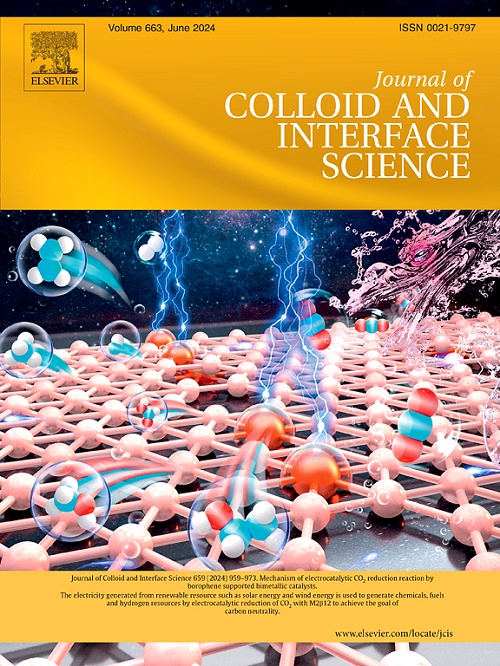Probing the colloidal behavior of a cell wall polysaccharides-degrading enzyme in a highly constrained model system
IF 9.4
1区 化学
Q1 CHEMISTRY, PHYSICAL
引用次数: 0
Abstract
Understanding the specific interaction of cell wall polysaccharides degrading-enzymes with their substrates is of fundamental and practical interest for the fine grasp of their activity. Such interactions are difficult to unveil in real-life conditions due to the structural complexity of the plant cell wall. In this work, we present complex and highly confined model systems of cholesteric cellulose nanocrystal suspensions reaching dimensions close to those found in the plant cell wall. Cellulose-xyloglucan (XG) assemblies of various surface chemistries were studied, allowing to probe the interactions and diffusion behavior of a glucanase both in diluted dynamic conditions and in an organized and concentrated (110–140 g/L) cholesteric environment. QCM-D and synchrotron source-deep UV analyses showed that XG adsorbed in a flat and extended conformation changed the glucanase interaction with the polysaccharides from attractive to repulsive, making it prone to spontaneously migrate to regions with lower solid content. Furthermore, it strongly increased the enzyme diffusion kinetics. Our results confirm the preferential interaction of both enzyme and XG on the cellulose hydrophobic crystalline plane. This work provides new insights on the influence of the interaction of a protein with a substrate on its transport in a constrained environment.

在一个高度受限的模型系统中探测细胞壁多糖降解酶的胶体行为
了解细胞壁多糖降解酶与其底物的特定相互作用,对其活性的精细把握具有基础和实际意义。由于植物细胞壁结构的复杂性,这种相互作用很难在现实条件下揭示。在这项工作中,我们提出了复杂和高度受限的胆甾质纤维素纳米晶体悬浮液模型系统,其尺寸接近于植物细胞壁中发现的尺寸。研究了不同表面化学性质的纤维素-木葡聚糖(XG)组合,从而可以在稀释的动态条件下以及在有组织和浓缩(110-140 g/L)胆固醇环境下探测葡聚糖酶的相互作用和扩散行为。QCM-D和同步加速器源深紫外分析表明,XG以扁平和扩展的构象吸附,使葡聚糖酶与多糖的相互作用从吸引变为排斥,使其容易自发迁移到固体含量较低的区域。此外,它还大大提高了酶的扩散动力学。我们的结果证实了酶和XG在纤维素疏水晶面上的优先相互作用。这项工作为蛋白质与底物的相互作用对其在受限环境中的运输的影响提供了新的见解。
本文章由计算机程序翻译,如有差异,请以英文原文为准。
求助全文
约1分钟内获得全文
求助全文
来源期刊
CiteScore
16.10
自引率
7.10%
发文量
2568
审稿时长
2 months
期刊介绍:
The Journal of Colloid and Interface Science publishes original research findings on the fundamental principles of colloid and interface science, as well as innovative applications in various fields. The criteria for publication include impact, quality, novelty, and originality.
Emphasis:
The journal emphasizes fundamental scientific innovation within the following categories:
A.Colloidal Materials and Nanomaterials
B.Soft Colloidal and Self-Assembly Systems
C.Adsorption, Catalysis, and Electrochemistry
D.Interfacial Processes, Capillarity, and Wetting
E.Biomaterials and Nanomedicine
F.Energy Conversion and Storage, and Environmental Technologies

 求助内容:
求助内容: 应助结果提醒方式:
应助结果提醒方式:


